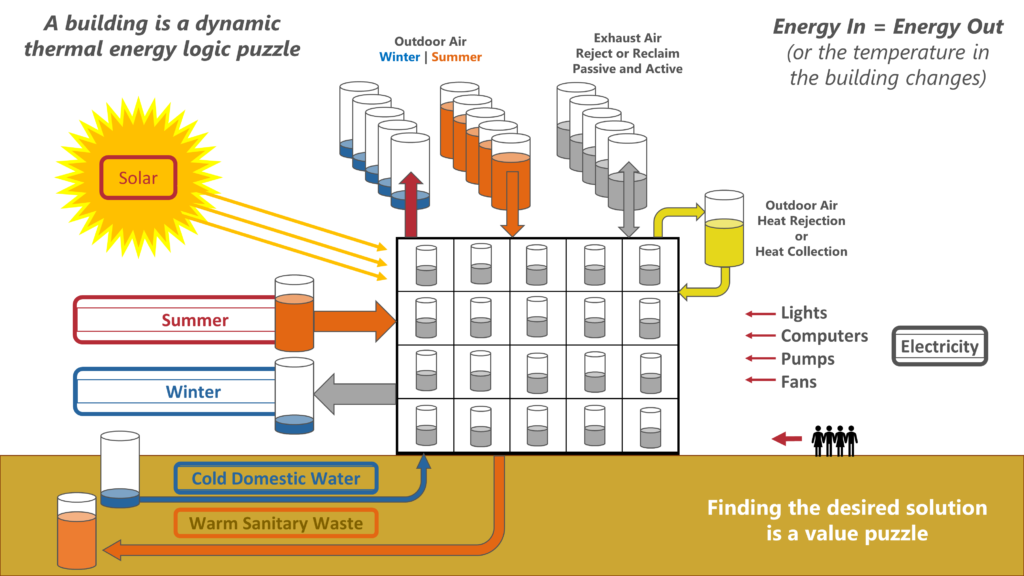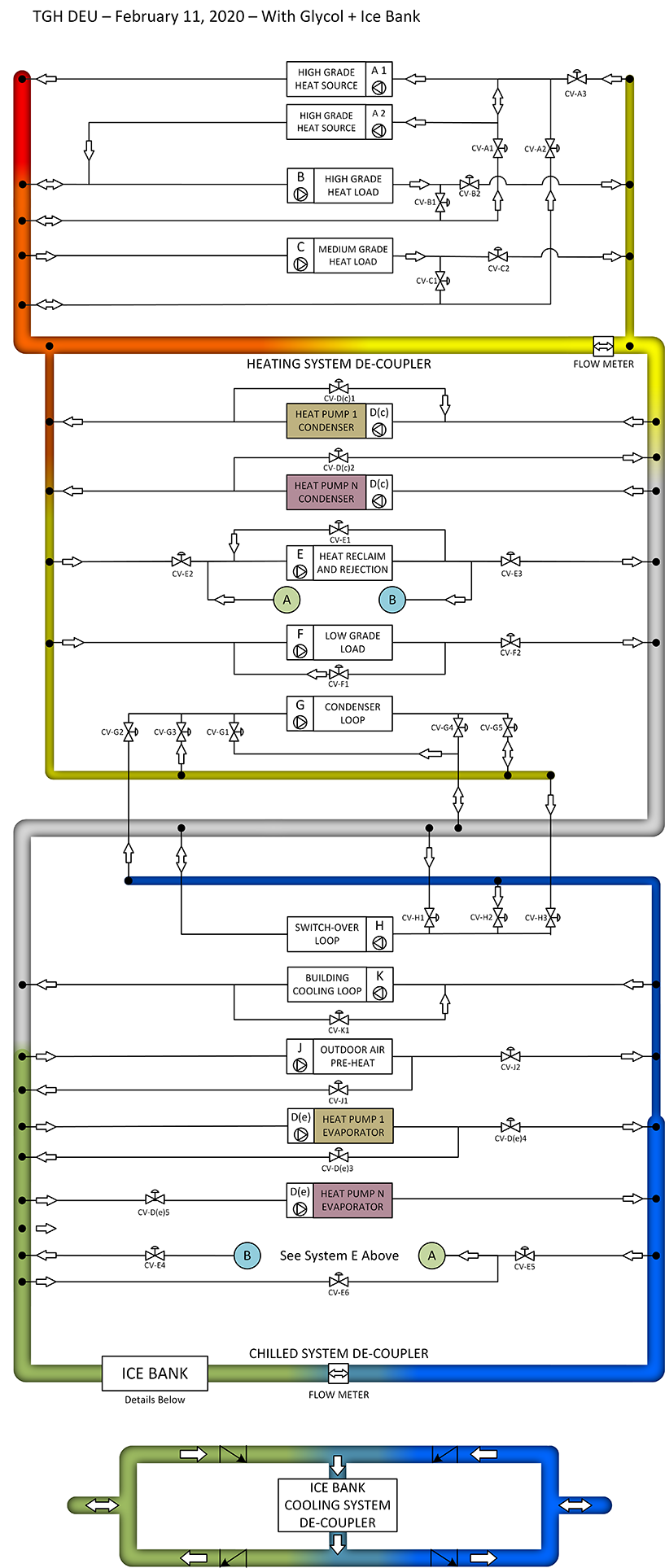A piping framework and corresponding standardized control sequence, upon which HVAC engineers develop their schematic designs.
A TGH is a continuous pipe filled with water or glycol that has a hot end and a cold end with a gradient of variable temperature zones in between. It functions as a smart hub for thermal energy transport by moving thermal energy within a zone or from zone to zone depending on demand. The TGH integrates, and also separates, systems based on supply and return fluid temperatures, independent of whether they are used for ‘heating’ or ‘cooling’ or both.
The TGH allows HVAC engineers to use standard HVAC equipment and components to develop designs that provide the most efficient and cost effective method to manage thermal energy resources in and around a building.
A TGH increases a building’s overall thermal efficiency by eliminating waste thermal energy. The energy is collected and relocated to other building areas that need it.
HEATING is COOLING
A TGH is based on understanding that heating and cooling are the results at opposite sides of every thermal energy transfer. Heating something always results in cooling the thing that the heat came from. Every heat transfer is always simultaneously both heating and cooling.
Heating is the transfer of thermal energy from one object to another.
Cooling is the transfer of thermal energy from one object to another.

HOW DO CONTEMPORARY BUILDINGS OPERATE?
From a heat transfer perspective, a building is an enclosure that maintains a controlled interior environment regardless of the changing environment outside. Thermal energy passes through the building’s envelope, and must be managed to ensure a constant indoor environment.
Maintaining a constant indoor environment is the process of ensuring the quantity of energy entering the building equals the quantity of energy leaving the building.
When too much thermal energy is leaving through the building envelope, like in the winter, the building gets cold. Thermal energy must be added by the HVAC system to replace the heat that was lost.
If too much energy is entering through the building envelope, including both thermal (summer) and electrical energy, the building gets warmer. Thermal energy must be removed by the HVAC system to remove the heat that was gained and maintain a balance.
A TGH optimizes a building’s intrinsic thermal energy before relying on external resources.
The goal: Zero Thermal Waste.
Buildings need heat for up to 5 things:
- Domestic Hot Water Final Heat
- Domestic Hot Water Pre-heat
- Building envelope thermal loss
- Outdoor Air Final Heat
- Outdoor Air Pre-heat
Each use has a different temperature requirement, meaning there can be five different heating water supply and return temperatures required to optimize energy use in a building.
The amount of energy required to satisfy these different loads varies daily and seasonally – meaning to optimize performance, the heating system sources must also be able to respond to the changes.
Optimizing a heating system for pre-heating outdoor air can provide return fluid cooler than a chiller can produce, which can be used to passively and efficiently reclaim more heat.
RESULT
Having a patent gave Thermenex an opportunity to do what others would love to, but could not – build various configurations of the gradient technology and test them on operating buildings in real world conditions.
Thermenex gained valuable expertise and knowledge based on lessons learned during the real world testing on 20 systems, serving over 30 buildings – some operating for more than 10 years.
One painful lesson – it was too complex. So in late 2018, Thermenex reimagined the gradient technology and developed another innovative piping arrangement that is now patent pending: A Single Primary, Dual Secondary piping arrangement.
This innovation provides automatically optimized dual heating temperatures from a heat pump plant – all controlled with a single temperature setpoint, making the high performing system easier for programmers to program and building operators to understand and manage.
The TGH is the result of this research and development

